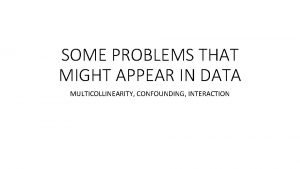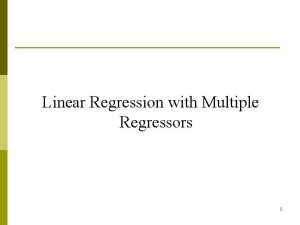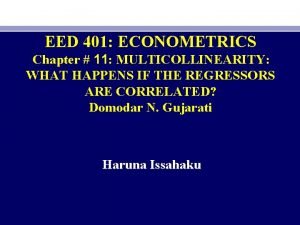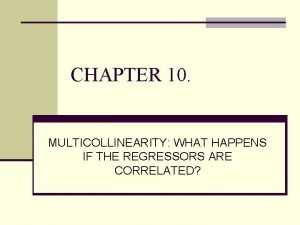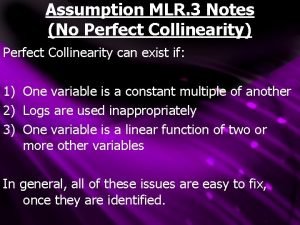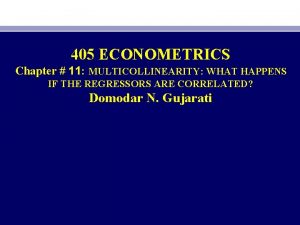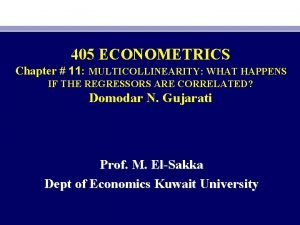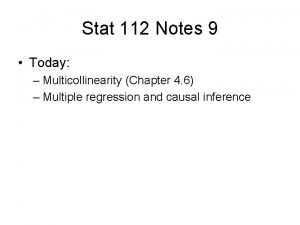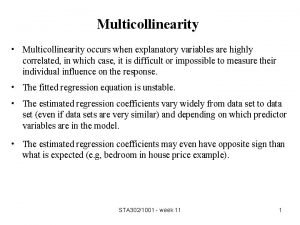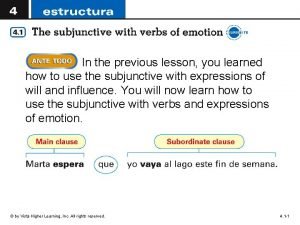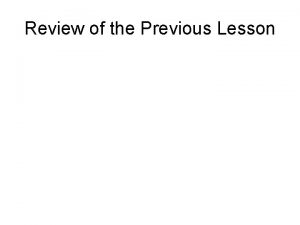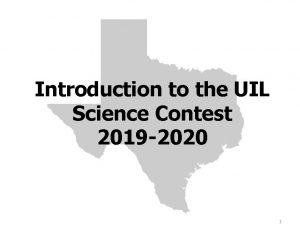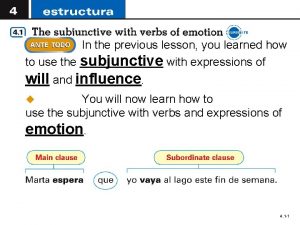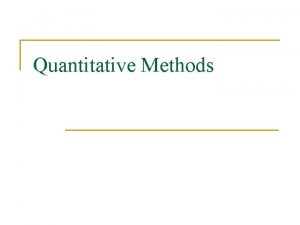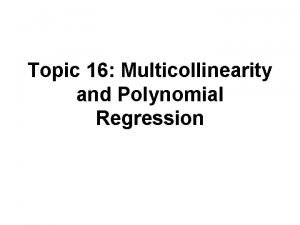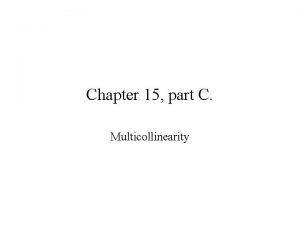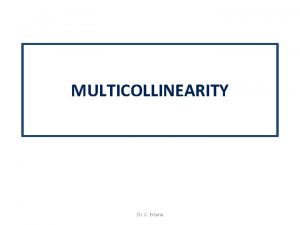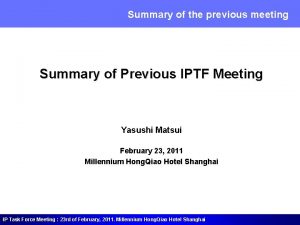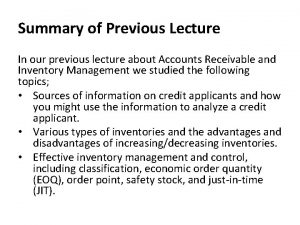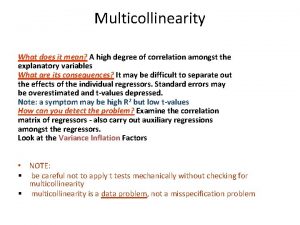Lecture 19 Summary of previous Lecture Multicollinearity Degree


















- Slides: 18

Lecture 19 Summary of previous Lecture Multicollinearity Degree not presence Sources Detection Remedies

Today Discussion Heteroscedasticity Ø Nature Ø Reasons Ø Consequences Ø Detection Ø Remedial measure

HETEROSCEDASTICITY •

Why Heteroscedasticity- reasons •

Reasons…. •

Reasons……. . •


Reasons…… 5 -Specification bias: Heteroscedasticity may arise from violating Assumption, correctly specified. Example: Omission of important variables: The demand function. The residuals obtained from the regression may give the distinct impression that the error variance may not be constant. 6 - Skewness: Skewness in the distribution of one or more regressors included in the model. Examples: economic variables such as income, and wealth It is well known that the distribution of income and wealth in most societies is uneven, with the bulk of the income and wealth being owned by a few at the top


Reasons. . . 7 - Other sources: (A) incorrect data transformation (e. g. , ratio or first difference transformations) (B) incorrect functional form (e. g. , linear versus log–linear models).

Implications of Heteroscedasticity • OLS is still unbiased. • OLS is no longer efficient; some other linear estimator will have a lower variance. • Estimated Standard Errors will be incorrect; C. I. ’s and hypothesis tests will be incorrect. • The solution is GLS and WLS.

Tests for Heteroscedasticity Like Multicollinearity, there are no hard-and-fast rules for detecting heteroscedasticity, only a few rules of thumb. In most cases Heteroscedasticity may be a matter of intuition, educated guesswork, prior empirical experience, or sheer speculation. Two approaches Informal and Formal Methods Informal methods: 1 - Nature of the Problem: The nature of the problem under consideration suggests whether heteroscedasticity is likely to be encountered. For example cross-sectional data involving heterogeneous units, heteroscedasticity may be the rule.

Informal Methods •

Formal Methods •



Formal Methods…. •

 Multicollinearity problems
Multicollinearity problems Multicollinearity
Multicollinearity Perfect multicollinearity
Perfect multicollinearity Ballentine view of multicollinearity
Ballentine view of multicollinearity No perfect multicollinearity assumption
No perfect multicollinearity assumption Ballentine view of multicollinearity
Ballentine view of multicollinearity Ballentine view of multicollinearity
Ballentine view of multicollinearity Consequences of multicollinearity
Consequences of multicollinearity Multicollinearity occurs when
Multicollinearity occurs when 01:640:244 lecture notes - lecture 15: plat, idah, farad
01:640:244 lecture notes - lecture 15: plat, idah, farad Randy pausch the last lecture summary
Randy pausch the last lecture summary What does reverend cram want the iroquois to do?
What does reverend cram want the iroquois to do? Previous owner of oregon territory
Previous owner of oregon territory In your previous lesson
In your previous lesson Value received and value parted with
Value received and value parted with Uil science
Uil science In the previous lesson
In the previous lesson In the previous lesson i learned that
In the previous lesson i learned that Disregard previous command hand and arm signal
Disregard previous command hand and arm signal
